A Novel Carbon Dioxide Phase Transition Rock Breaking Technology: Theory and Application of Non-Explosive Blasting
Abstract
:1. Introduction
2. Carbon Dioxide Phase Transition Blasting Technology
2.1. Principle of Carbon Dioxide Phase Transition Blasting
2.2. Carbon Dioxide Phase Transition Blasting Equipment
2.3. Energy Characteristics of Carbon Dioxide Phase Transition Blasting
3. Fracture Mechanism of Carbon Dioxide Phase Transition Blasting
3.1. CDPTB Stress Wave Characteristics
3.2. Mechanism of Fracture Initiation by Impact Stress Waves
3.3. Fracture Propagation Mechanism of High-Pressure Gas
4. Fracture Characteristics of Carbon Dioxide Phase Transition Blasting
4.1. Overall Characteristics of CDPTB Cracks
4.2. Macroscopic Fracture Characteristics of CDPTB
4.3. Microcosmic Fracture Characteristics of CDPTB
5. Vibration Characteristics of Carbon Dioxide Phase Transition Blasting
5.1. Vibration Attenuation Law
5.2. Time–Frequency Characteristics of CDPTB
6. Engineering Application of Carbon Dioxide Phase Transition Blasting
6.1. Pressure Relief and Permeability Enhancement in High-Gas Seams
6.2. Rock Breaking in Urban Engineering Construction
6.3. Pre-Splitting Blasting in Hard Coal or Rock Mass
6.4. Other Applications
7. Research Prospect
8. Conclusions
Author Contributions
Funding
Institutional Review Board Statement
Informed Consent Statement
Data Availability Statement
Conflicts of Interest
References
- Pal Roy, P. Emerging trends in drilling and blasting technology: Concerns and commitments. Arab. J. Geosci. 2021, 14, 652. [Google Scholar] [CrossRef]
- Shang, J.; Zhao, Z.; Aliyu, M. Stresses induced by a demolition agent in non-explosive rock fracturing. Int. J. Rock Mech. Min. Sci. 2018, 107, 172–180. [Google Scholar] [CrossRef]
- Li, Q.Y.; Chen, G.; Luo, D.Y.; Ma, H.P.; Liu, Y. An experimental study of a novel liquid carbon dioxide rock-breaking technology. Int. J. Rock Mech. Min. Sci. 2020, 128, 104244. [Google Scholar] [CrossRef]
- Wladzielczyk, K.; Ghose, A.K. Environment-Friendly Techniques of Rock Breaking; Routledge: London, UK, 2021. [Google Scholar]
- Zhou, X.; Men, J.; Song, D.; Zhao, H. Research on increasing coal seam permeability and promoting gas drainage with liquid CO2 blasting. China Saf. Sci. J. 2015, 2, 60–65. [Google Scholar]
- Chen, S.L.; Huang, B.X.; Zhao, X.L.; Lu, W.Y.; Tian, Z.C. Directional fracturing excavation technology based on liquid CO2 phase transition in freezing shaft sinking. Energy Sources Part A Recovery Util. Environ. Eff. 2020, 1–15. [Google Scholar] [CrossRef]
- Zhu, W.C.; Gai, D.; Wei, C.H.; Li, S.G. High-pressure air blasting experiments on concrete and implications for enhanced coal gas drainage. J. Nat. Gas Sci. Eng. 2016, 36, 1253–1263. [Google Scholar] [CrossRef] [Green Version]
- Schooler, D.R. The Use of Carbon Dioxide for Dislodging Coal in Mines. Ph.D. Thesis, Missouri University of Science and Technology, Rolla, MO, USA, 1944. [Google Scholar]
- Weir, P.; Edwards, J. Mechanical loading and Cardox revolutionize an old mine. Coal Age 1928, 33, 288–290. [Google Scholar]
- Lu, T.K.; Wang, Z.F.; Yang, H.M.; Yuan, P.J.; Han, Y.B.; Sun, X.M. Improvement of coal seam gas drainage by under-panel cross-strata stimulation using highly pressurized gas. Int. J. Rock Mech. Min. Sci. 2015, 77, 300–312. [Google Scholar] [CrossRef]
- Cao, Y.; Zhang, J.; Tian, L.; Zhai, H.; Fu, G.; Tang, J. Research and application of CO2 gas fracturing for gas control in low permeability coal seams. J. China Coal Soc. 2017, 42, 2631–2641. [Google Scholar]
- Nie, Z. Application of cardox dioxide blasting technique in coal mines. Coal Technol. 2007, 26, 36–37. [Google Scholar]
- Mei, B.; Gao, X.; Fang, Y.; Zhu, Z.; Zhang, B. Study on a New Type of Fracturing Tube and Safety Technology of Carbon Dioxide Expansion Blasting. Blasting 2021, 2, 153–159. [Google Scholar]
- Dong, Q.; Wang, Z.; Han, Y.; Sun, X. Research on TNT equivalent of liquid CO2 phase-transition fracturing. China Saf. Sci. J. 2014, 24, 84–88. [Google Scholar]
- Zhou, K.; Ke, B.; Li, J.; Zhang, Y.; Cheng, L. Pressure dynamic response and explosion energy of liquid carbon dioxide blasting system. Blasting 2017, 34, 7–13. [Google Scholar]
- Guo, Y. Fracturing Mechanisms and Functions of Improvement of Gas Drainage of Highly Pressurized Carbon Dioxide Gas System; Henan Polytechnic University: Jiaozuo, China, 2017. [Google Scholar]
- Yang, X.L.; Wen, G.C.; Sun, H.T.; Li, X.L.; Lu, T.K.; Dai, L.C.; Gao, J.; Li, L. Environmentally friendly techniques for high gas content thick coal seam stimulation-multi-discharge CO2 fracturing system. J. Nat. Gas Sci. Eng. 2019, 61, 71–82. [Google Scholar] [CrossRef]
- Fan, Y.C.; Qin, B.T.; Zhou, Q.; Shi, Q.L.; Wu, J.H. Liquid CO2 phase transition fracturing technology and its application in enhancing gas drainage of coal mines. Adsorpt. Sci. Technol. 2020, 38, 393–412. [Google Scholar] [CrossRef]
- Hu, G.Z.; He, W.R.; Sun, M. Enhancing coal seam gas using liquid CO2 phase-transition blasting with cross-measure borehole. J. Nat. Gas Sci. Eng. 2018, 60, 164–173. [Google Scholar] [CrossRef]
- Yang, Z.B.; Zhou, Y.J.; Xu, X.D.; Yi, W.; Li, M.P.; Li, X.T. Numerical Modelling of Liquid CO2 Phase Transition Blasting Based on Smoothed Particle Hydrodynamics Algorithm. Therm. Sci. 2019, 23, S693–S702. [Google Scholar] [CrossRef]
- Liu, D.W.; Tang, Y.; Cai, C.W.; Jian, Y.H. A Rock Fracturing Method Using High-Pressure Gas Expansion: Case Study on Its Application in Hangzhou-Lin’an Intercity Railway. Adv. Civ. Eng. 2021, 2021, 6654471. [Google Scholar] [CrossRef]
- Kang, J.H.; Zhou, F.B.; Qiang, Z.Y.; Zhu, S.J. Evaluation of gas drainage and coal permeability improvement with liquid CO2 gasification blasting. Adv. Mech. Eng. 2018, 10, 1–15. [Google Scholar] [CrossRef] [Green Version]
- Bai, X.; Zhang, D.M.; Zeng, S.; Zhang, S.W.; Wang, D.K.; Wang, F.L. An enhanced coalbed methane recovery technique based on CO2 phase transition jet coal-breaking behavior. Fuel 2020, 265, 116912. [Google Scholar] [CrossRef]
- Cheng, W. Borehole parameter optimization for supercritical carbon dioxide phase-transition fracturing. In IOP Conference Series: Earth and Environmental Science; IOP Publishing: Bristol, UK, 2020; p. 042025. [Google Scholar]
- Ye, W.; Lu, Y.; Xi, L.; Zhang, Q.; Hu, S. Vibration Effect Induced by Rock Breaking Technology Based on Dry Ice and Energy-gathered Agent in Trench Excavation. J. Phys. Conf. Ser. 2022, 2148, 012023. [Google Scholar] [CrossRef]
- Wang, B.; Li, H.B.; Shao, Z.S.; Chen, S.A.; Li, X.F. Investigating the mechanism of rock fracturing induced by high-pressure gas blasting with a hybrid continuum-discontinuum method. Comput. Geotech. 2021, 140, 104445. [Google Scholar] [CrossRef]
- Hong, L.; Li, X.; Ma, C.; Yin, T.; Ye, Z.; Liao, G. Study on size effect of rock dynamic strength and strain rate sensitivity. Chin. J. Rock Mech. Eng. 2008, 27, 526–533. [Google Scholar]
- Hu, S.B.; Pang, S.G.; Yan, Z.Y. A new dynamic fracturing method: Deflagration fracturing technology with carbon dioxide. Int. J. Fract. 2019, 220, 99–111. [Google Scholar] [CrossRef]
- Wang, H.; Chang, L.; Liu, Q. Enhanced CMM Drainage with High-pressure Gas Fracturing: A Novel Way to Control Greenhouse Gas Emissions in the Coal Mine. J. Residuals Sci. Technol. 2017, 14, 57–66. [Google Scholar]
- Chen, Z. Fracture-Seepage Evolution Law by Carbon Dioxide Phase Change Blasting in Low Permeability Coal Seam; China University of mining and technology: Beijing, China, 2019. [Google Scholar]
- Zheng, Y.; Zhou, F.; Hu, S.; Yu, T.X. Fragmentations of solids under impact tension. Adv. Mech. 2016, 46, 506–540. [Google Scholar]
- Mott, N.F. Fragmentation of shell cases. Proc. R. Soc. Lond. A Math. Phys. Sci. 1947, 189, 300–308. [Google Scholar]
- Gao, F.; Tang, L.H.; Zhou, K.P.; Zhang, Y.A.; Ke, B. Mechanism Analysis of Liquid Carbon Dioxide Phase Transition for Fracturing Rock Masses. Energies 2018, 11, 2909. [Google Scholar] [CrossRef] [Green Version]
- Bai, X. Research on Mechanism and Application of Liquid Carbon Dioxide Phase Change Jet Fracturing Coal Seam to Increase Gas Permeability; Chongqing University: Chongqing, China, 2019. [Google Scholar]
- Shang, Z.; Wang, H.F.; Li, B.; Cheng, Y.P.; Zhang, X.H.; Zhao, F.; Zhang, X.; Hao, C.M.; Wang, Z.Y. Fracture processes in coal measures strata under liquid CO2 phase transition blasting. Eng. Fract. Mech. 2021, 254, 107902. [Google Scholar] [CrossRef]
- Yang, X.L.; Wang, C.; Chu, H.B.; Yan, S.Y.; Wei, H.X.; Yu, M.F. Study on the Stress Field and Crack Propagation of Coal Mass Induced by High-Pressure Air Blasting. Minerals 2022, 12, 300. [Google Scholar] [CrossRef]
- Shang, Z.; Wang, H.; Li, B.; Cheng, Y.; Zhang, X.; Wang, Z.; Geng, S.; Wang, Z.; Chen, P.; Lv, P.; et al. The effect of leakage characteristics of liquid CO2 phase transition on fracturing coal seam: Applications for enhancing coalbed methane recovery. Fuel 2022, 308, 122044. [Google Scholar] [CrossRef]
- Gao, F.; Xie, H.-P.; Zhao, P. Fractal properties of size-frequency distribution of rock fragments and the influence of meso-structure. Chin. J. Rock Mech. Eng. 1994, 13, 240–246. [Google Scholar]
- Xia, B.W.; Liu, X.F.; Song, D.Z.; He, X.Q.; Yang, T.; Wang, L.K. Evaluation of liquid CO2 phase change fracturing effect on coal using fractal theory. Fuel 2021, 287, 119569. [Google Scholar] [CrossRef]
- Ke, B. Experimental Study on Phase Transition Dynamic of Supercritical Carbon Dioxide and Its Rock Breaking Mechanism; Central South University: Changsha, China, 2017. [Google Scholar]
- Sui, H.Y.; Su, T.M.; Hu, R.L.; Yang, K.; Cheng, Y.X. Liquid CO2 Phase-Transition Rock Fracturing: A Novel Technology for Safe Rock Excavation. Appl. Sci. 2022, 12, 69. [Google Scholar] [CrossRef]
- Peng, X. Experimental Study on Mechanism of CO2 Fracturing and Enhancing Permeability Based on Fractal Theory in Guizhou Soft Coal Seam; Guizhou University: Guiyang, China, 2022. [Google Scholar]
- Liao, Z.; Liu, X.; Song, D.; He, X.; Nie, B.; Yang, T.; Wang, L. Micro-structural Damage to Coal Induced by Liquid CO2 Phase Change Fracturing. Nat. Resour. Res. 2020, 30, 1613–1627. [Google Scholar] [CrossRef]
- Alfonso, I.; Beltran, A.; Abatal, M.; Castro, I.; Fuentes, A.; Vazquez, L.; Garcia, A. Fractal Dimension Determination of Rock Pores by Multi-Scale Analysis of Images Obtained Using OM, SEM and XCT. Fractals-Complex Geom. Patterns Scaling Nat. Soc. 2018, 26, 1850067. [Google Scholar] [CrossRef]
- Li, H.; Shi, S.L.; Lin, B.Q.; Lu, J.X.; Ye, Q.; Lu, Y.; Wang, Z.; Hong, Y.D.; Zhu, X.N. Effects of microwave-assisted pyrolysis on the microstructure of bituminous coals. Energy 2019, 187, 115986. [Google Scholar] [CrossRef]
- Morales, F.A.; Aristizabal, L.C. A Discussion on the Transmission Conditions for Saturated Fluid Flow through Porous Media with Fractal Microstructure. Fractals-Complex Geom. Patterns Scaling Nat. Soc. 2019, 27, 1950033. [Google Scholar] [CrossRef]
- Liu, X.F.; Wang, Z.P.; Song, D.Z.; He, X.Q.; Yang, T. Variations in surface fractal characteristics of coal subjected to liquid CO2 phase change fracturing. Int. J. Energy Res. 2020, 44, 8740–8753. [Google Scholar] [CrossRef]
- Guo, Y.; Jiang, Z.; Peng, X.; Fu, X.; Wu, S.; Quan, X.; Yang, X. Experimental study on the influence of carbon dioxide cracking on coal pore structure. Saf. Coal Mines 2022, 53, 1–7. [Google Scholar]
- Yang, Y.; Zhu, X. Experimental Study on Vibration Attenuation Law of Liquid CO2 Gas Blasting Rock. Subgrade Eng. 2021, 1, 104–108. [Google Scholar]
- Sun, K.; Xin, L.; Wu, D.; Wang, J. Simulation of fracture law of supercritical CO2 explosion under initial stress condition CO2. Zhendong Yu Chongji/J. Vib. Shock 2018, 37, 232–238. [Google Scholar]
- Liu, X.; Li, Q.; Feng, G.; Chen, G.; Xie, X. Vibrational energy distribution of rock broken by phase transition of liquid carbon dioxide. Min. Metall. Eng 2018, 38, 5–10. [Google Scholar]
- Chen, G.; Li, Q.; Liu, X.; Wu, Z.; Ma, J. Research on energy distribution characters about liquid CO2 phase-transition broken rock vibration signal. Blasting 2018, 35, 155–163. [Google Scholar]
- Tao, M.; Zhao, H.; Li, X.; Ma, A. Comprehensive comparative analysis of liquid CO2 phase change fracturing and explosive rock fracturing. Blasting 2018, 35, 41–49. [Google Scholar]
- Xie, X.; Li, X.; Li, Q.; Ma, H.; Liu, X. Liquid CO2 phase-transforming rock fracturing technology in pile-well excavation CO2. Zhongnan Daxue Xuebao (Ziran Kexue Ban)/J. Cent. South Univ. (Sci. Technol.) 2018, 49, 2031–2038. [Google Scholar]
- Yuan, H.; Chen, C.; Yu, J.; Liu, X.; Dong, B. Liquid CO2 Phase Change Fracturing and Vibration Monitoring in Roadbed Slope Excavation. In Proceedings of the 2021 International Conference on Internet of Things and Smart City, IoTSC 2021, Kunming, China, 4–6 June 2021. [Google Scholar]
- Li, Q.; Liu, X.; Wu, Z.; Xie, X. Application of liquid CO2 phase change rock breaking technology in metro foundation pit excavation. J. Railw. Sci. Eng 2018, 15, 163–169. [Google Scholar]
- Xie, X.; Li, X.; Li, Q.; Ma, H.; Fang, Y.; Liu, X. Research and review about the liquid CO2 phase-transforming rock fracturing technology. J. Railw. Sci. Eng 2018, 15, 1406–1414. [Google Scholar]
- Liu, S.; Huang, Z. Feasibility study on the application of carbon dioxide phase change fracturing technology in a foundation pit of an open cut tunnel. In Proceedings of the 43rd International Conference on Vibroengineering, Greater Noida, India, 28–30 November 2019; pp. 295–300. [Google Scholar]
- Ke, B.; Zhou, K.; Li, J.; Zhang, Y.; Shi, W.; Cheng, L.; Yang, J. Time-frequency Analysis of Seismic Wave for Liquid CO2 Blasting System. Blasting 2017, 34, 137–142. [Google Scholar]
- Huang, N.E.; Shen, Z.; Long, S.R.; Wu, M.C.; Shih, H.H.; Zheng, Q.; Yen, N.-C.; Tung, C.C.; Liu, H.H. The empirical mode decomposition and the Hilbert spectrum for nonlinear and non-stationary time series analysis. Proc. R. Soc. London. Ser. A Math. Phys. Eng. Sci. 1998, 454, 903–995. [Google Scholar] [CrossRef]
- Liu, J.C.; Gao, W.X. Vibration Signal Analysis of Water Seal Blasting Based on Wavelet Threshold Denoising and HHT Transformation. Adv. Civ. Eng. 2020, 2020, 4381480. [Google Scholar] [CrossRef] [Green Version]
- Zhou, S.T.; Luo, X.D.; Jiang, N.; Zhang, S.T.; Lei, Y. Ground vibration characteristics of carbon dioxide phase transition fracturing: An in situ test. Bull. Eng. Geol. Environ. 2021, 80, 9029–9047. [Google Scholar] [CrossRef]
- Chen, Z.S.; Yuan, Y.; Wang, W.M.; Zhu, C.; Qin, Z.H.; Yan, C.L. Pressure Relief and Permeability Enhancement with Carbon Dioxide Phase Transition Blasting: Fracture, Seepage, and Practice. Lithosphere 2021, 2021, 4983754. [Google Scholar] [CrossRef]
- Yuan, Y.; Zuo, L.; Chen, Z.S.; Meng, C.G.; Yan, C.L.; Gong, Z.X. Improvement of coalbed methane recovery rate by carbon dioxide phase transition blast fracturing. Energy Sources Part A Recovery Util. Environ. Eff. 2022, 44, 3659–3672. [Google Scholar] [CrossRef]
- Liu, D. Application of Liquid Carbon Dioxide Phase Change Cracking Weakening Top Coal Technology in Extra Thick Coal Seam. Mod. Min. 2021, 37, 68–70. [Google Scholar]
- Xia, J.; Dou, B.; Xu, C.; Tian, H.; Zheng, J.; Cui, G.; Gu, J.; Chen, J. Optimum design of CO2 fracture initiator for thermal reservoir construction in hot dry rock. Drill. Eng. 2021, 48, 75–80. [Google Scholar]
- Xin, B.; Sheng, L.G.W.Y.Z.; Nili, X.X.F. Feasibility Study on Enhanced Permeability of Low Permeability Sandstone Type Uranium Deposit with Liquid CO2 Phase Transition Fracturing. Met. Mine 2021, 50, 50. [Google Scholar]
- Li, W.; Chen, Y.; Wang, F.Y.; Cao, Y.X.; Wang, H.Z.; Tian, L.; Xu, Y.; Guo, X.J.; Feng, S.Q.; Hu, X.P. Feasibility study of developing one new type of seismic source via carbon dioxide phase transition. Chin. J. Geophys. Chin. Ed. 2020, 63, 2605–2616. [Google Scholar]

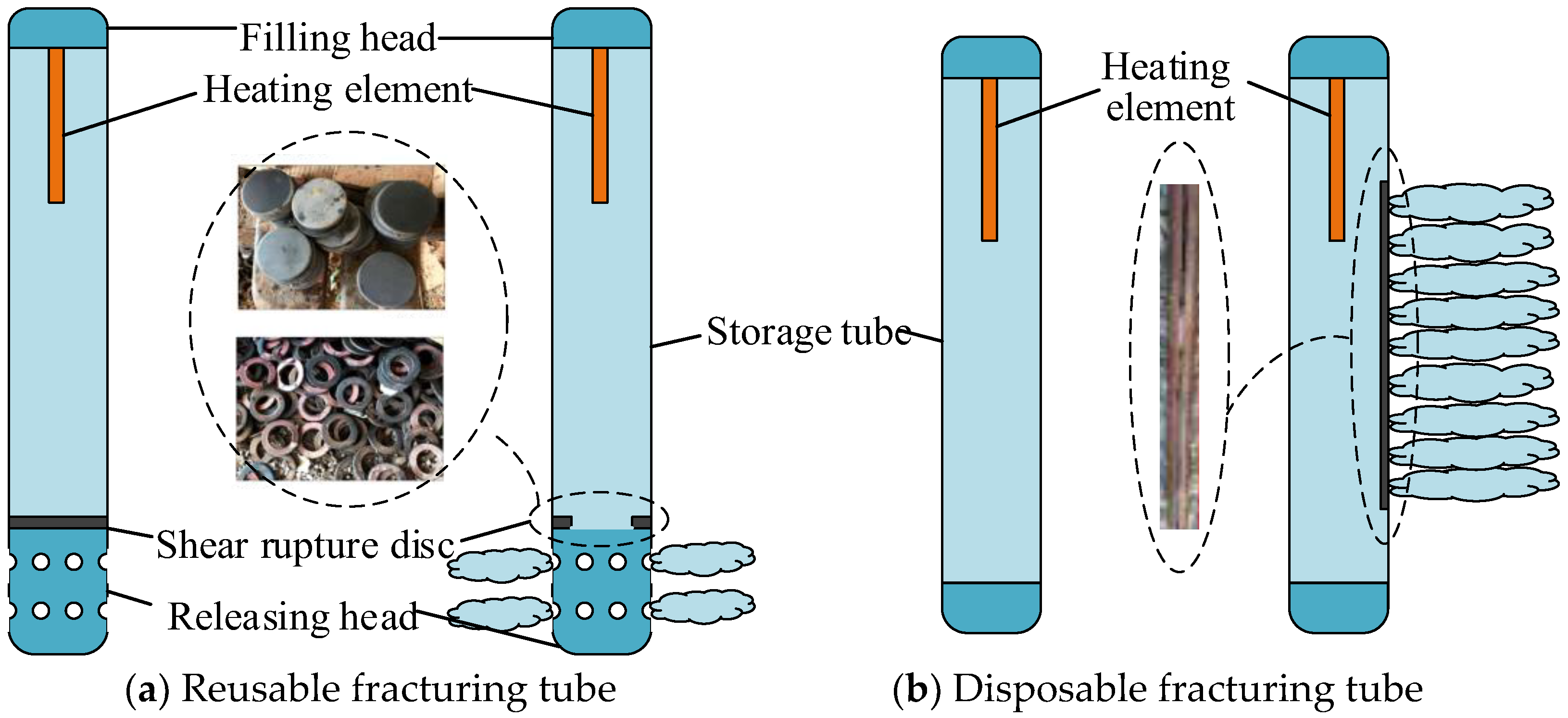

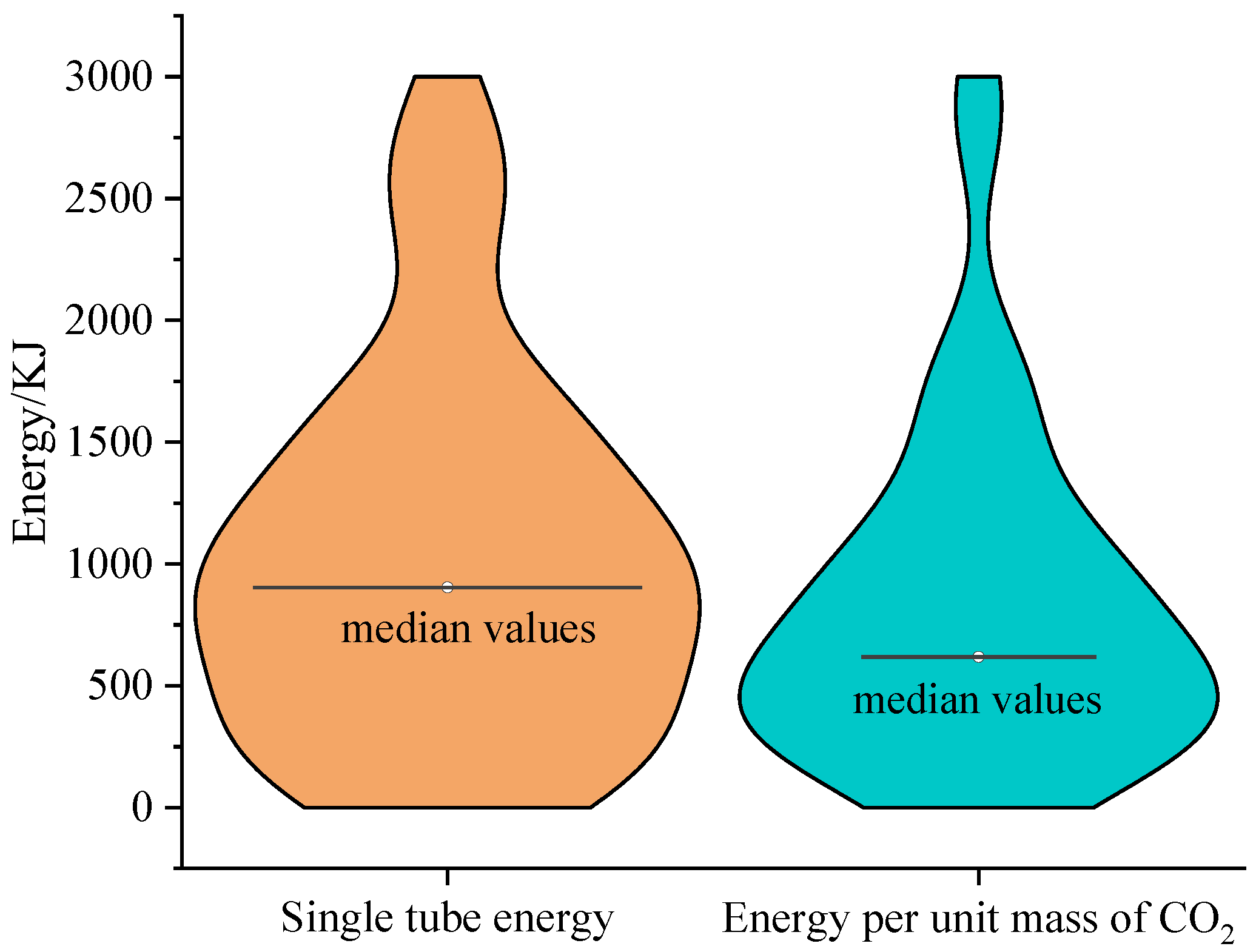





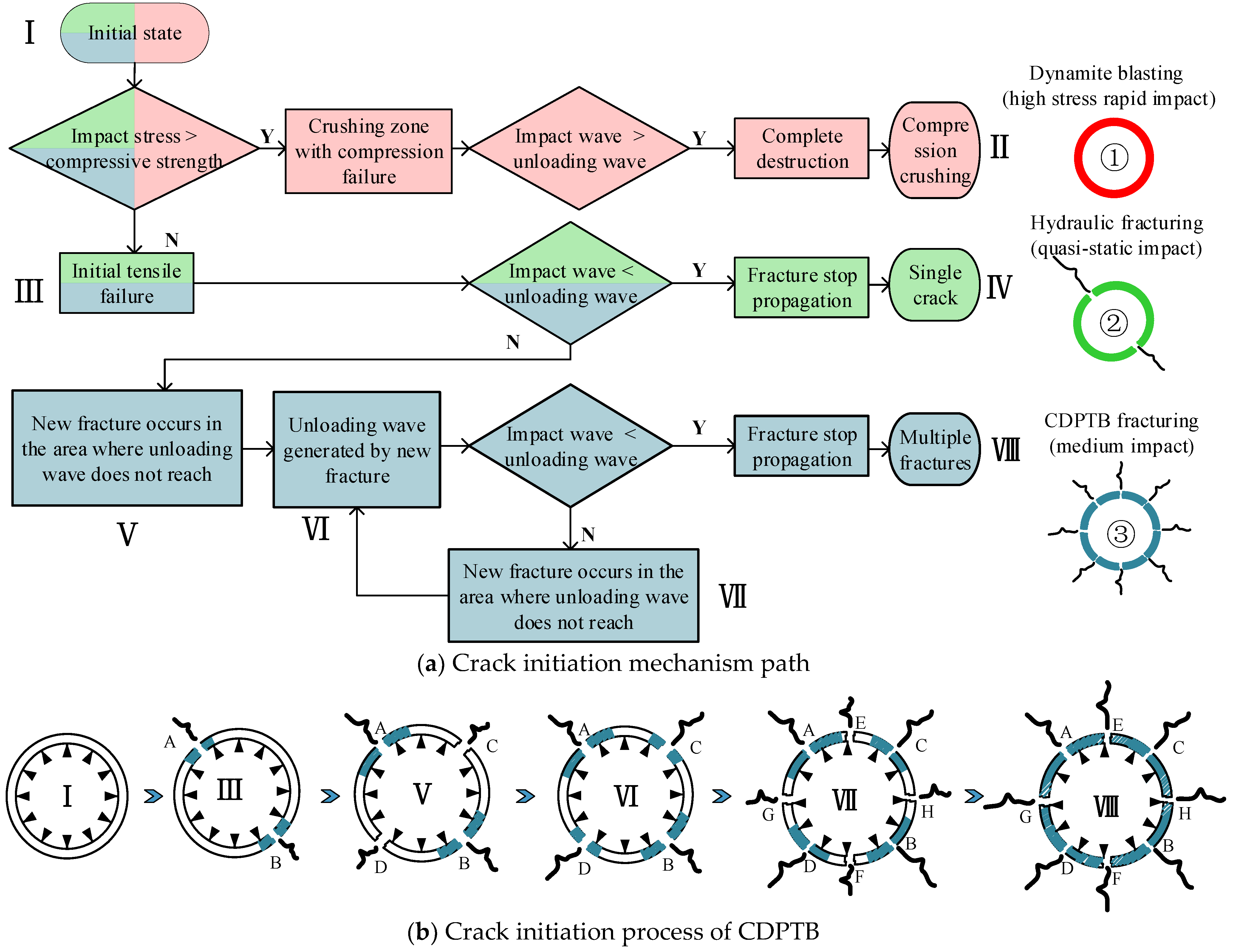

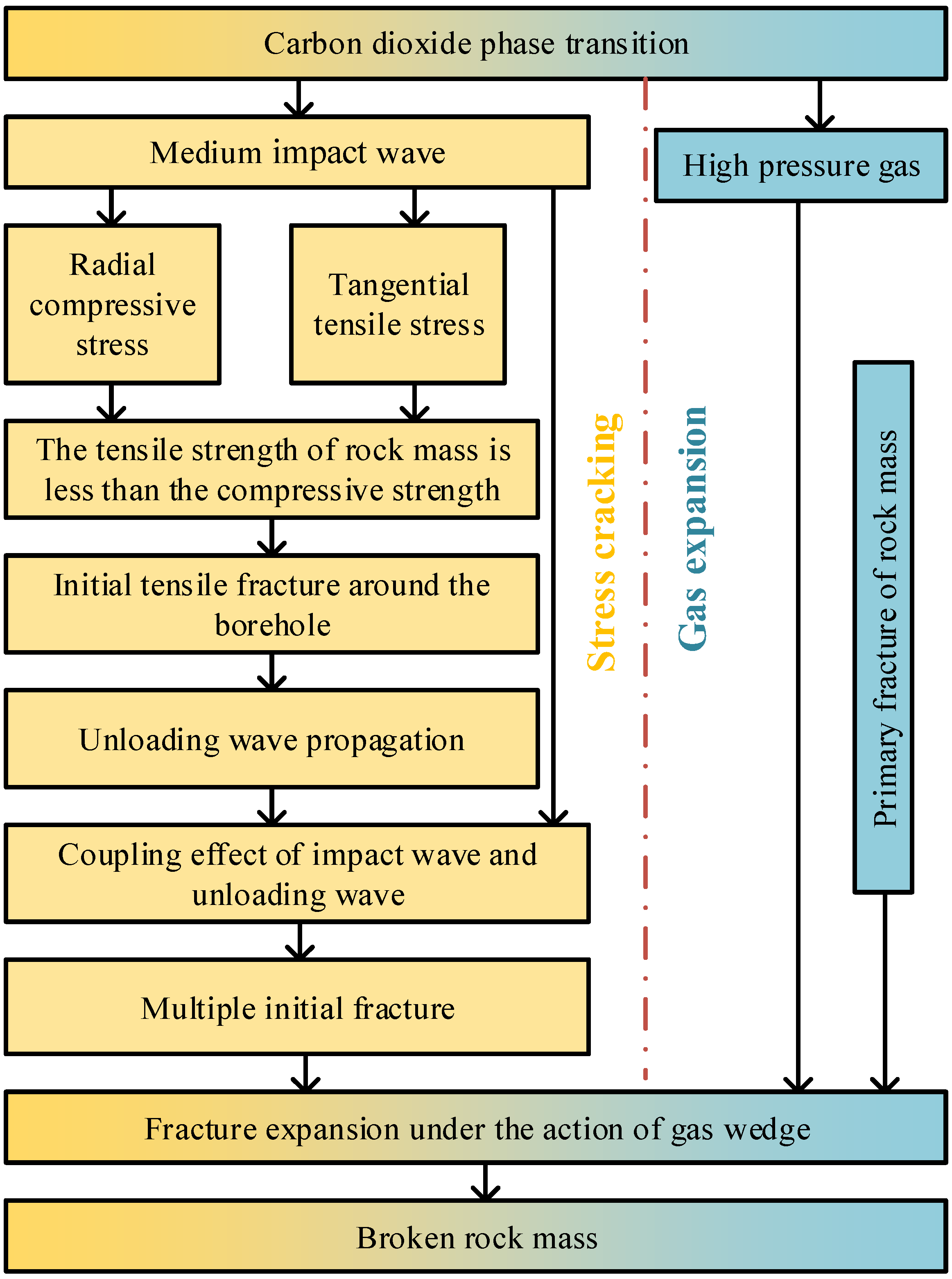
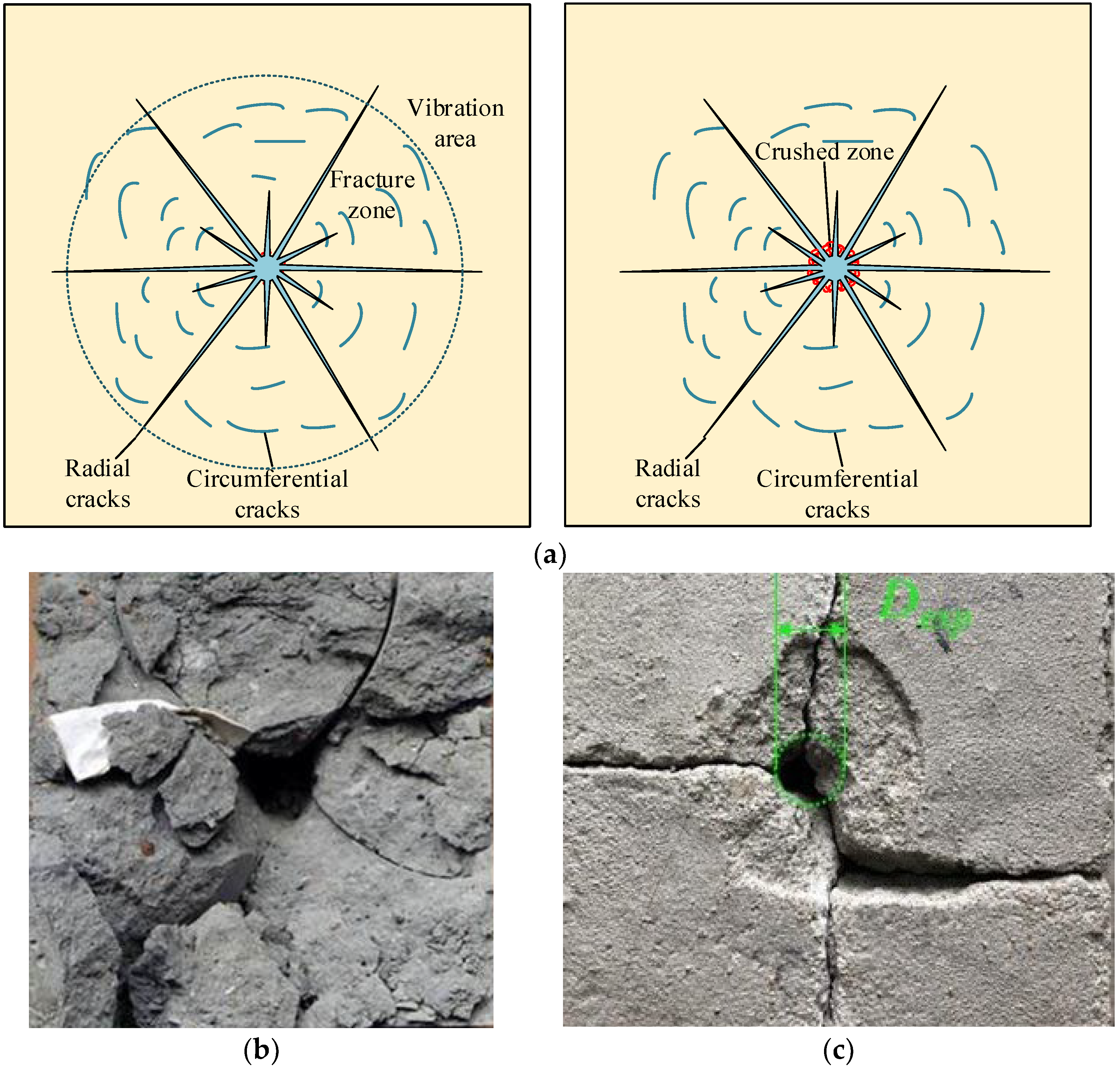
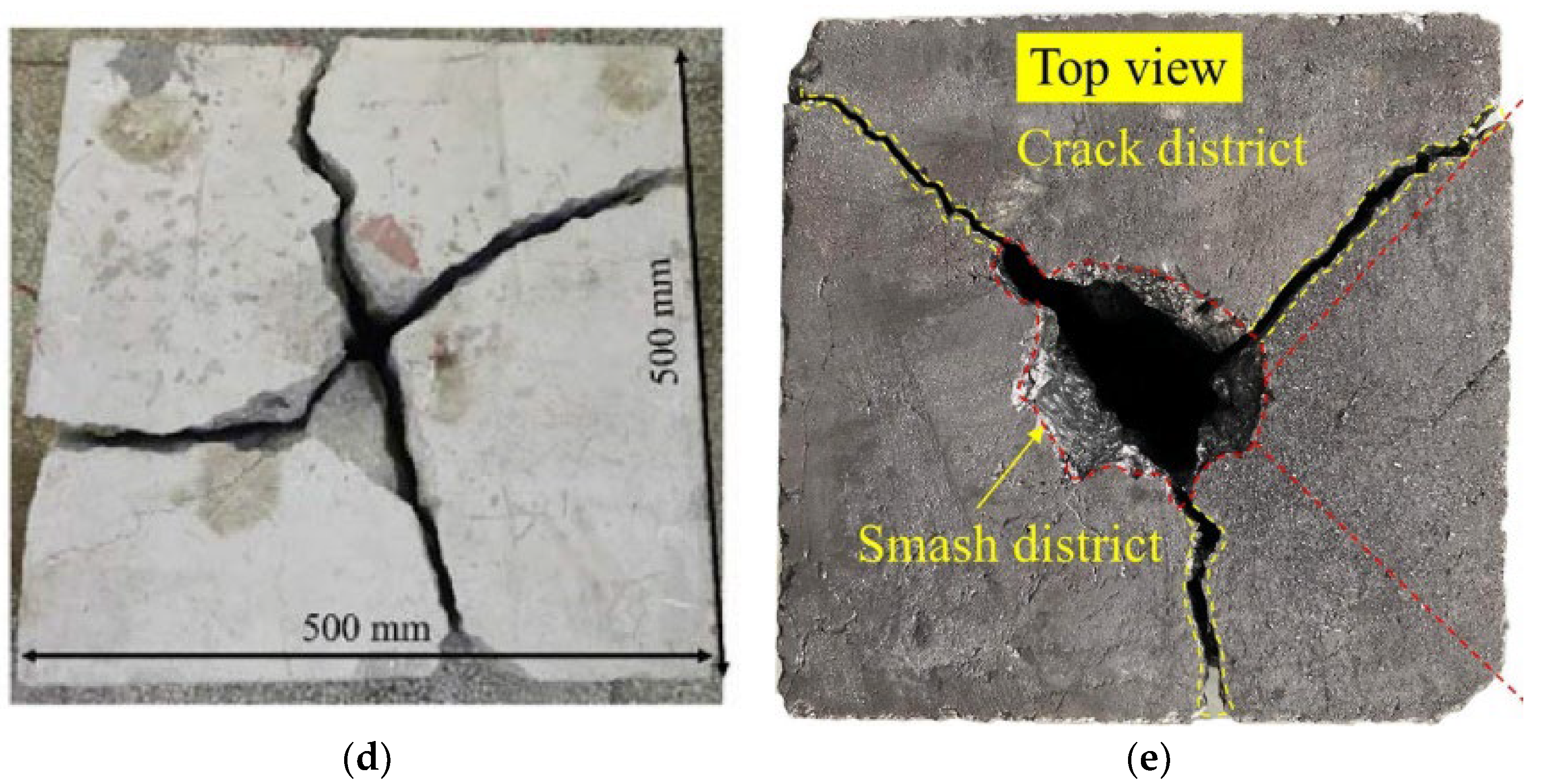

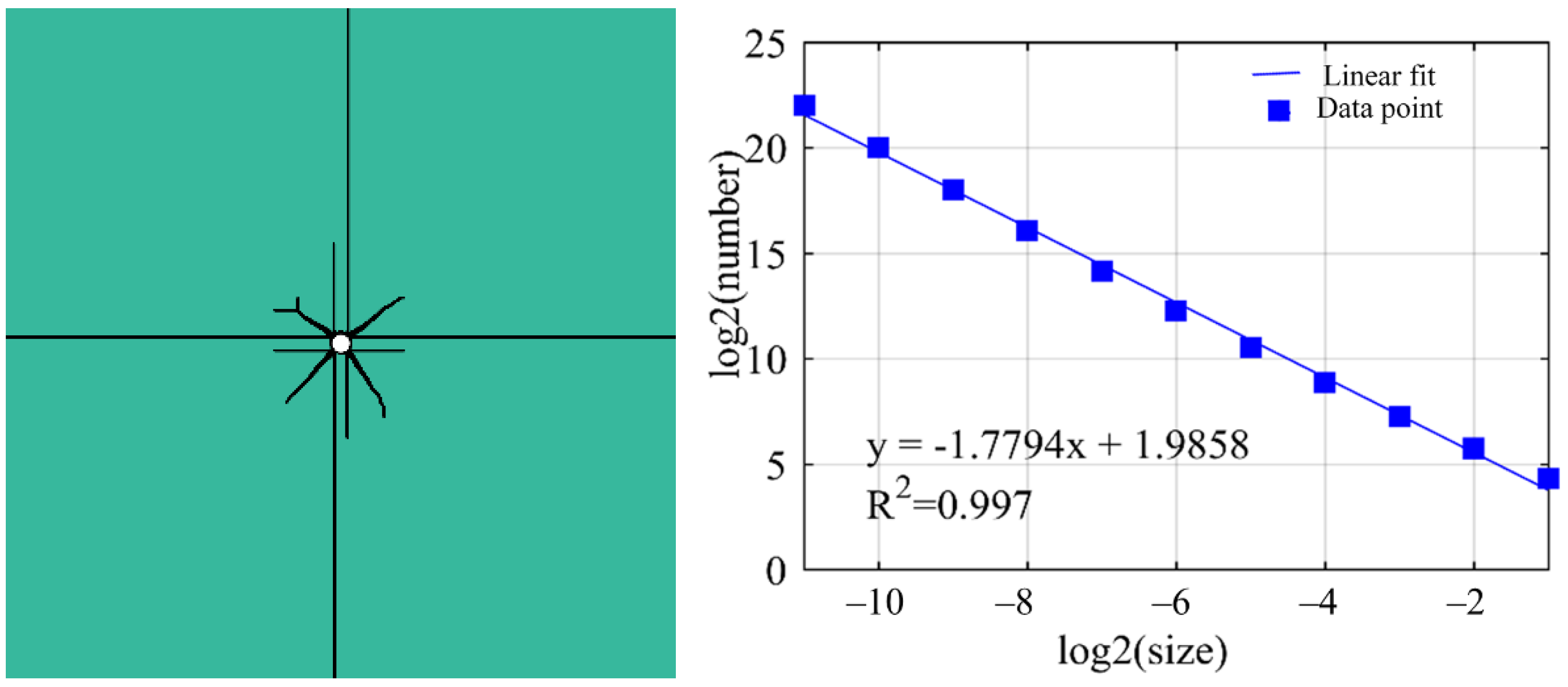
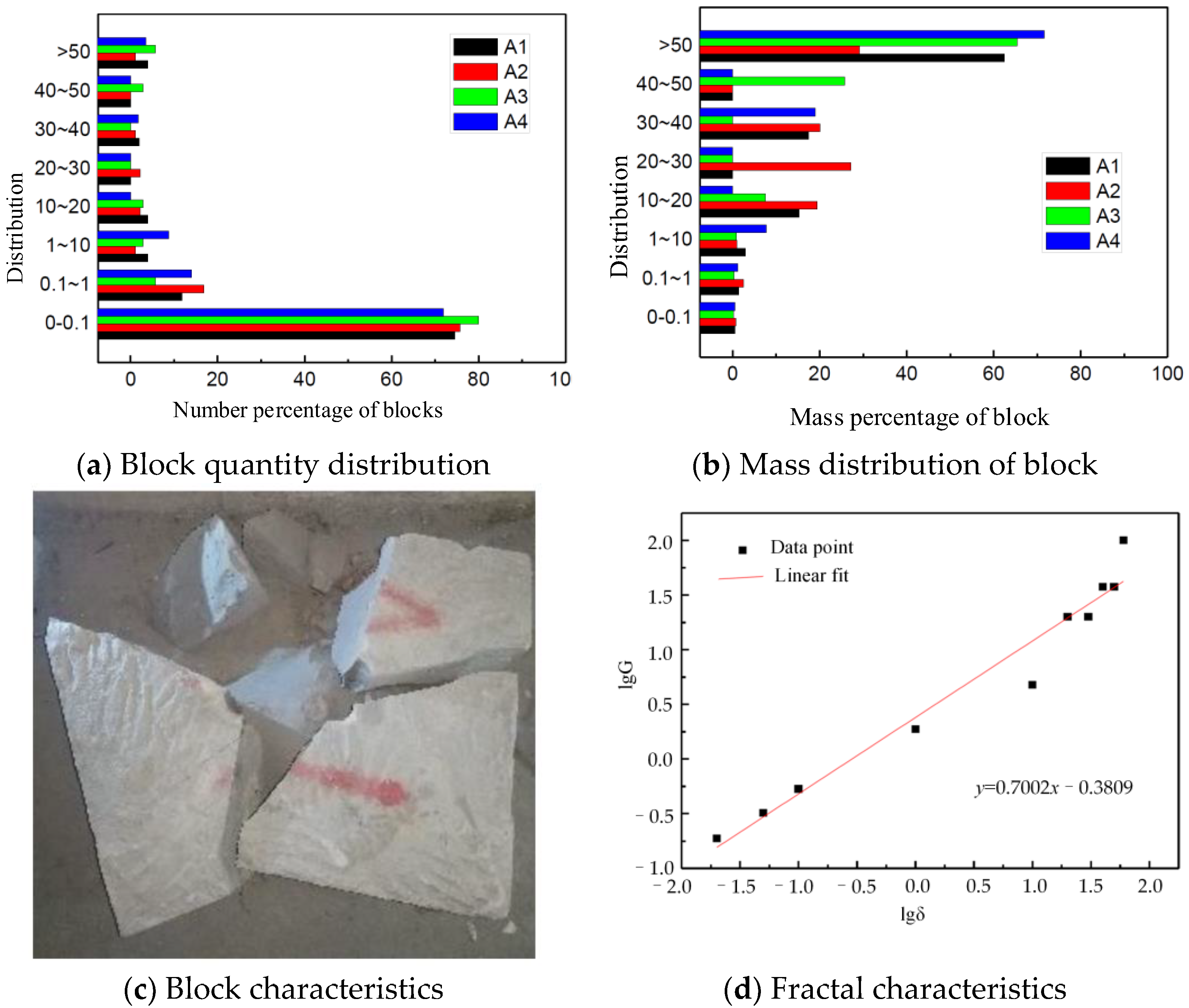
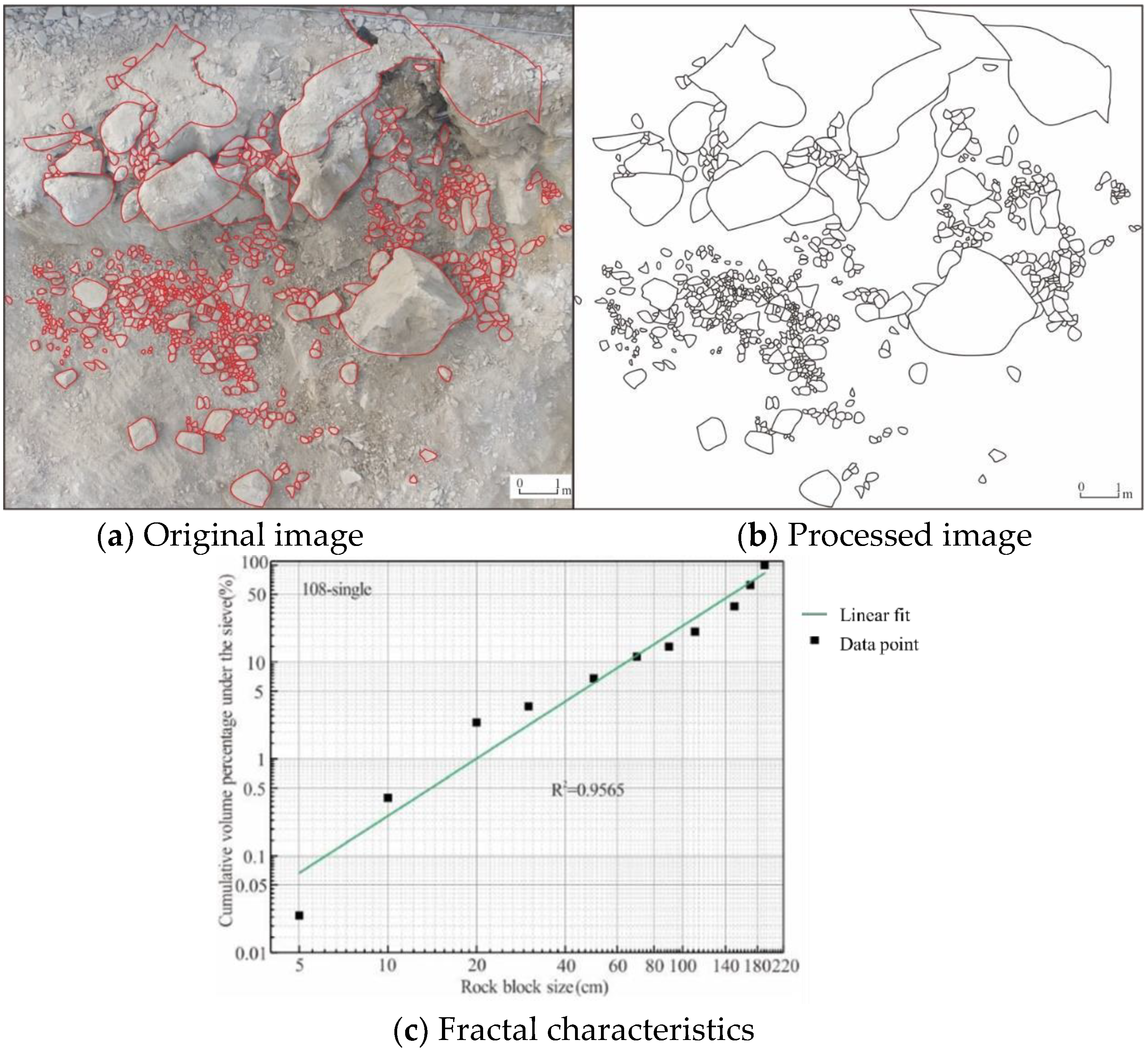


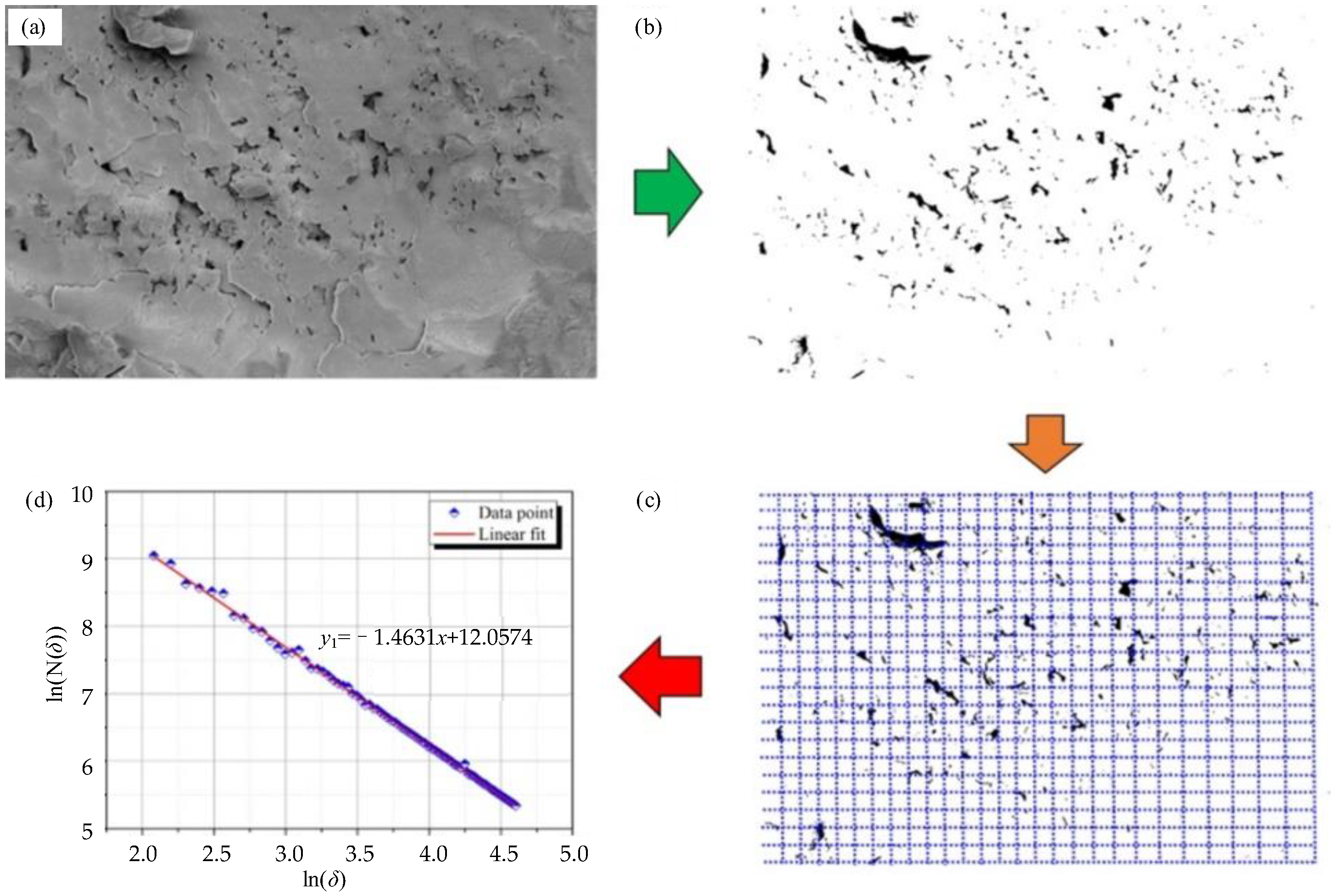

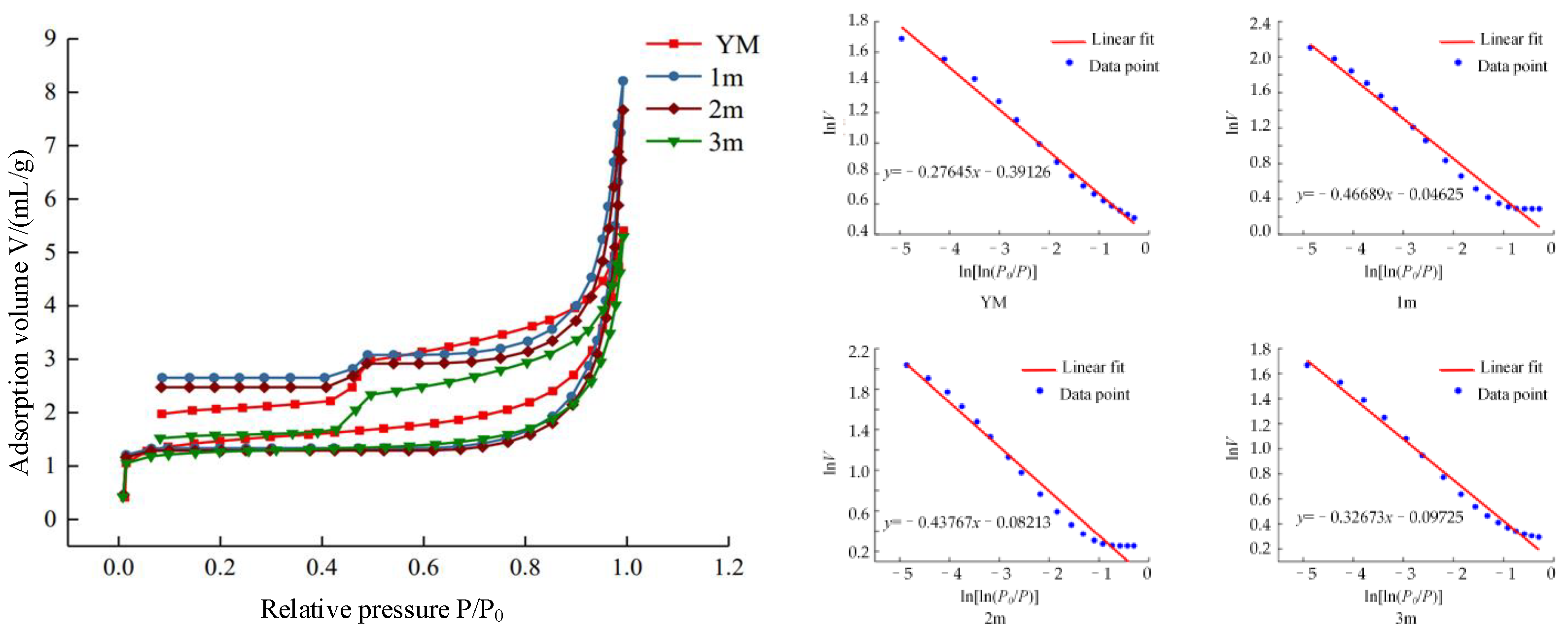
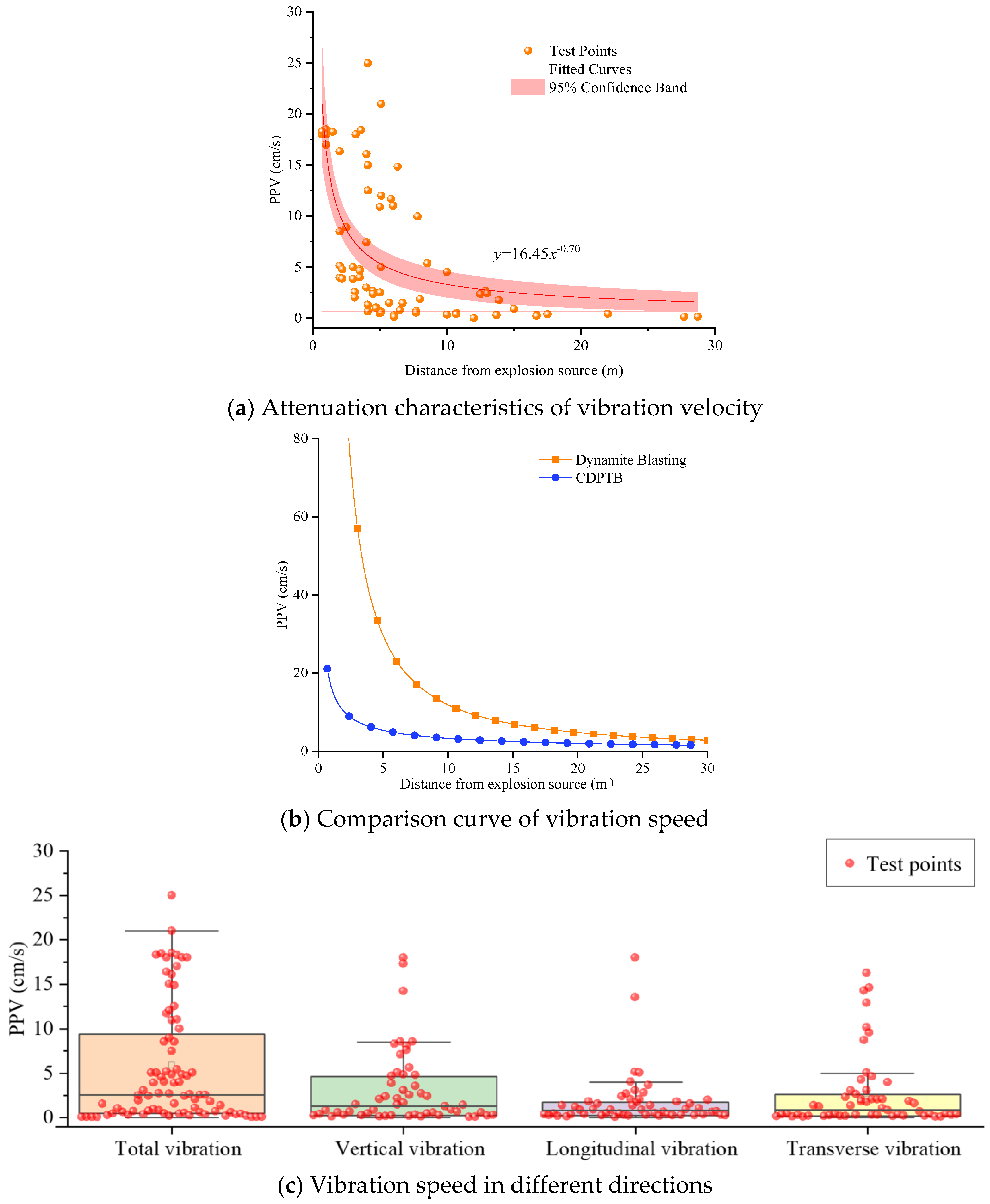

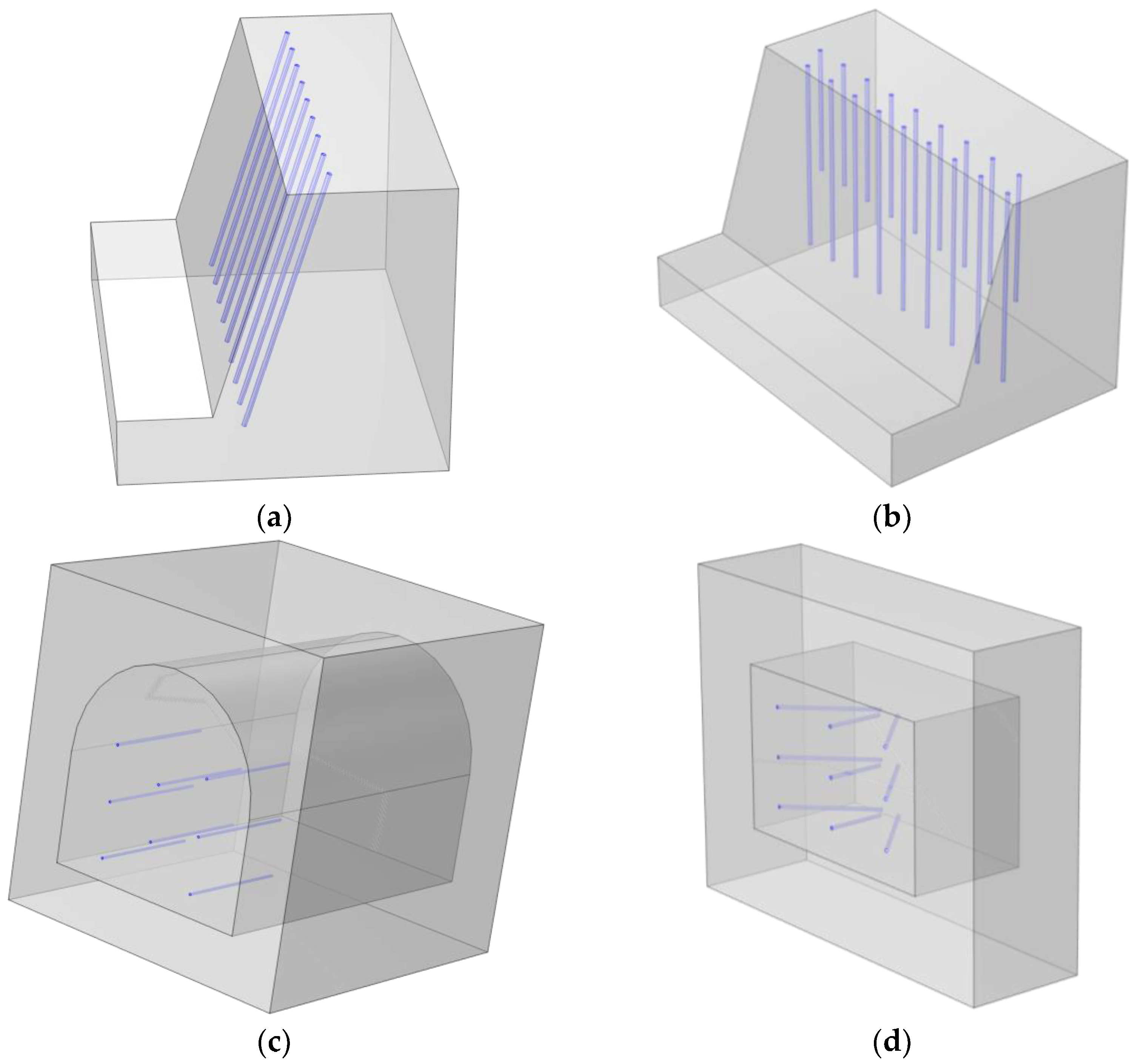
| Calculation Principle | Calculation Formula | CO2 Blasting Energy per Unit Mass/KJ | TNT Equivalent/g | Evaluation |
|---|---|---|---|---|
| Compressed gas and water vapor containers | Formula (1) | 385.1~1256.4 | 90.6 ~295.6 | It is widely used, the parameters are easy to obtain, the calculation is simple, the calculation result of explosion energy is small, the influence of temperature on explosion energy is not considered and the influence of volume on explosion energy is large. |
| Jet velocity | Formula (2) | 562.8~641.3 | 132.2 ~150.6 | The influence of volume and mass on explosion energy is not considered, so there is a large error. |
| Volume of gaseous explosion products | Formula (3) | 1687.3 | 397.0 | The volume of gaseous explosion products is affected by factors such as explosive ratio, and the result may not be very accurate. |
| Blasting vibration | Formula (4) | 1615~2827.5 | 380.0 ~430.0 | The indirect test of blasting vibration requires on-site blasting test, with large quantities. |
| Real state equation | Formula (5) Formula (6) | 327.3~1250 | 77.0 ~294.1 | The thermodynamic characteristic of CO2 is a real equation of state, with high calculation accuracy and complex calculation. |
| Type | Rise Time (s) | Peak Pressure (Mpa) | Loading Rate (Mpa/s) | Total Times (s) |
|---|---|---|---|---|
| Blasting | 10−7 | 104 | >108 | 10−6 |
| CDPTB fracturing | 10−3 | 102 | 102~106 | 10−2 |
| Hydraulic fracturing | 102 | 10 | <10−1 | 104 |
| Traditional Blasting | Expansive Agent, Hydraulic Tongs | Hydraulic Hammer | CDPTB | |
|---|---|---|---|---|
| Mechanism | Detonation wave, and impact on the fractured rock mass | Static crushing, expansion agent flows into the rock mass along the hole wall crack, resulting in the fracture of the protection area | Hydraulic hammer mechanical crushing | Carbon dioxide phase change generates high-pressure gas in the hole, and the gas pressure is lower than the explosion pressure of the explosive |
| Motive power | Chemical reaction | Chemical agents, hydraulic | Machinery | Physical work |
| Technology | Special operation, strict approval requirements and complicated technology | Less used in large-volume sub-firm rock excavations | Simple and easy to use, high-strength rock crushing difficulties | Wide range of sources, simple approval, complex technology |
| Security | High safety requirements, high evacuation and alert requirements, high dust | Silent, no flyrock, no pollution to the environment, no vibration | Less flyrock and high noise | Low vibration, less flyrock, no environmental pollution |
| Efficiency | High rock breaking efficiency and low labor intensity | Long time, uncertain expansion direction and low rock breaking efficiency | Low rock breaking efficiency and high labor intensity | Short time, requiring the assistance of excavators |
| Cost | 20 RMB/m3 | 100 RMB/m3 | 100 RMB/m3 | 30 RMB/m3 |
Publisher’s Note: MDPI stays neutral with regard to jurisdictional claims in published maps and institutional affiliations. |
© 2022 by the authors. Licensee MDPI, Basel, Switzerland. This article is an open access article distributed under the terms and conditions of the Creative Commons Attribution (CC BY) license (https://creativecommons.org/licenses/by/4.0/).
Share and Cite
Chen, Z.; Yuan, Y.; Yan, C.; Wang, W.; Qin, Z. A Novel Carbon Dioxide Phase Transition Rock Breaking Technology: Theory and Application of Non-Explosive Blasting. Processes 2022, 10, 2434. https://doi.org/10.3390/pr10112434
Chen Z, Yuan Y, Yan C, Wang W, Qin Z. A Novel Carbon Dioxide Phase Transition Rock Breaking Technology: Theory and Application of Non-Explosive Blasting. Processes. 2022; 10(11):2434. https://doi.org/10.3390/pr10112434
Chicago/Turabian StyleChen, Zhongshun, Yong Yuan, Chenlong Yan, Wenmiao Wang, and Zhenghan Qin. 2022. "A Novel Carbon Dioxide Phase Transition Rock Breaking Technology: Theory and Application of Non-Explosive Blasting" Processes 10, no. 11: 2434. https://doi.org/10.3390/pr10112434
APA StyleChen, Z., Yuan, Y., Yan, C., Wang, W., & Qin, Z. (2022). A Novel Carbon Dioxide Phase Transition Rock Breaking Technology: Theory and Application of Non-Explosive Blasting. Processes, 10(11), 2434. https://doi.org/10.3390/pr10112434







